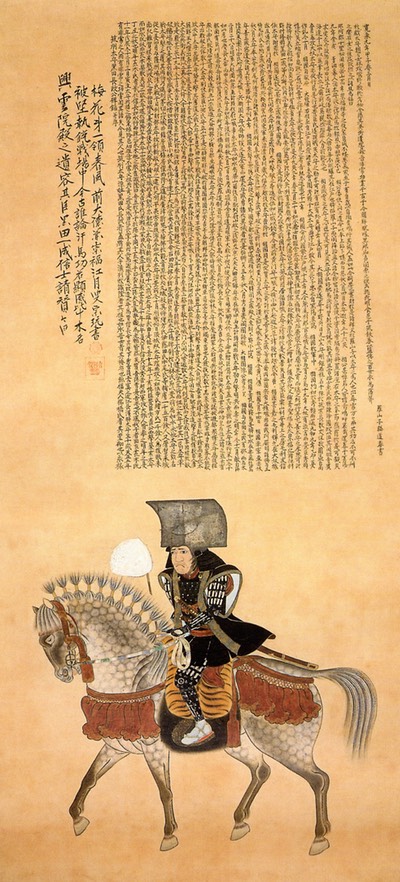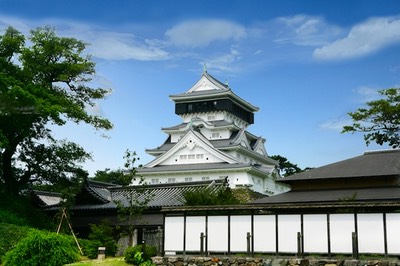It is now clear that, after Musashi had broken up with his father and moved in with his mother, his father, Muni, had left the service of Shinmen Munesada, and entered the service of Kuroda Toshitaka. When Toshitaka died in 1596, Muni entered the service of his brother Yoshitaka, whose headquarters of Nakatsu castle still crown the otherwise uninspiring Port of Nakatsu.
It was around this time that Musashi decided to seek out his father in Kyushu. According to the Bushū denraiki, written in 1815 by Tanji Hōkin:
辨之助中津へ下り、父が勘氣をも赦免し、父子一所にあり。是、辨之助十七歳の時なり。
Bennosuke traveled down [from Harima] to Nakatsu and, having regained Muni’s favor, father and child were living together again [in the castle town of Nakatsu]. At this time Bennosuke was seventeen years of age.
Nakatsu castle at the time the young Musashi arrived in Kyushu, was Kuroda Toshitaka’s new headquarters. He had moved to the area in 1587, the year in which the great Toyotomi Hideyoshi had granted him the fief of Buzen to the tune of sixteen thousand koku in reward for his contribution in Hideyoshi’s campaign to subdue Kyushu. The next year, he had begun on the construction of Nakatsu castle, a formidable stronghold, situated on an artificial island, rendering a successful siege by his many enemies in the area almost impossible.
In 1600, while his great ally, Tokugawa Ieyasu, was moving agains an alliance of western forces lead by Ishida Mitsunari at Sekigahara, Yoshitaka launched a massive campaign to subdue northern Kyushu. Beginning with Aki and Tomiku castle, he subdued the castles of Usuki, Saiki, Tsunomure, Hinokuma, Kawaradake, and Kokura in quick succession. He was so successful that within the space of no more than a month he had brought under his control two complete provinces.
From the Bushū denraiki we know that Musashi participated in the siege of Tomiku castle. However, he probably took part in two more battles while he resided with his father in Kyushu, for in a letter to Sakazaki Naizen, Hosokawa Tadatoshi’s head of pages, Musashi claims that:
若年より軍場へ出候事以上六度にて、其内四度は、其場におゐて拙者より先ヲ懸候者、一人も無之候。其段はあまねく何も存知之事にて、尤證據も有之候。乍然此儀は以全く身上之申立に仕にては無之候。
From a young age I have, in all, gone into battle some six times, four times out of which I was in the absolute vanguard. This is widely known, and of course there is also proof of it. However, it is not at all with a view to advance my social position that I mention this.
Since it has been established that Musashi took part in the the siege of Tomiku castle, the siege of Osaka castle, and the suppression of the Shimabara Rebellion, it follows that—if his claim is right—Musashi participated in three more battles. And since the siege of Tomiku castle was only part of a much larger campaign, involving a string of sieges and pitched battles, it is likely that those battles were part of Kuroda Yoshitaka’s campaign to bring Kyushu under Tokugawa control.
It must have been in the course of these fierce battles that the young Musashi was able to hone the fighting skills he had learned from his father in Miyamoto and his uncle Dōrinbō in his small temple near Hirafuku village.
Any queries of remarks? Launch or join a discussion at our new FORUM

